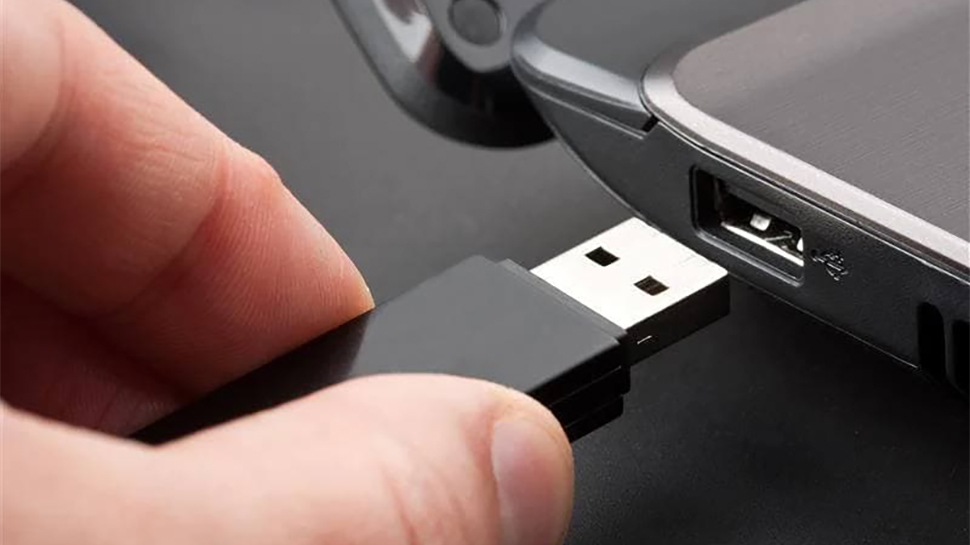USB 2.0 is 25 years old today — the interface standard that changed the world
USB 2.0 was the game-changer we needed to revolutionize data transfer between devices.

The USB Implementers Forum (USB-IF) introduced the USB 2.0 standard on April 27, 2000, meaning this port speed is turning 25 years old today. The USB 2.0 standard pushed this interface to the mainstream, especially as it delivered a blazingly fast transfer speed (for its time) of 480 Mbps with its Hi-Speed USB. This was over 40 times faster than the 12 Mbps limit of USB 1.1 and was even faster than Apple’s first implementation of its proprietary FireWire 400 connector. More importantly, it was cheaper to implement than the latter, making it more attractive to motherboard manufacturers.
USB 2.0's early days
Despite the standard being released in 2000, German publication Heise [machine translated] reminds us that it took a couple more years before PC makers started putting USB 2.0 on their devices. VIA was the first company to deploy it, with its Southbridge VT8235 that had P4X333 and KT333 chipsets in 2002, with Apple followed suit in 2003 with its USB 2.0-equipped Macs. It wasn’t until 2004 that Intel released a Pentium 4 chipset that had USB 2.0 capabilities, despite it being one of the companies that spearheaded the development of the first USB standard.
Furthermore, there wasn’t widespread driver support for USB 2.0 when it launched. It took Windows XP almost a year to support the standard when Microsoft released Service Pack 1 in August 2002. It wasn’t until the release of Windows 2000 Service Pack 4 in June 2003 that the older operating system was able to take advantage of USB 2.0’s higher speeds. Windows 95 and 98, which were still quite popular at the turn of the century, did not receive native support for USB 2.0 at all, although Windows 98 Second Edition (SE) supported third-party drivers for the standard.
USB 2.0 helped replace the parallel and serial ports used for connecting peripherals to your computer. These old connectors were rather large and painfully slow, with the former’s highest bitrate limited to around 20 Mbps, while the latter could only hit 256 Kbps. Furthermore, USB 2.0 is decidedly more compact than those old standards, that used many more pins, and lacked the hot-swappable USB benefits.
This made USB 2.0 much more convenient to use. When paired with its cheaper licensing costs, it made absolute sense for manufacturers to implement USB 2.0 as the primary way for connecting peripherals and transferring data between devices. USB-IF also released several smaller connector types for USB, including USB Mini and USB Micro, which made it convenient to implement on more portable devices, like smartphones and tablets.
USB4 and beyond
Today, USB4 Version 2.0 is the fastest USB standard available. This allows for transfer speeds of up to 80 Gbps, making it a crucial improvement, as we produce more data every year. Nevertheless, the USB 2.0 standard remains widely used, especially for peripherals that do not need fast data transfer rates, like mice and keyboards. Even the latest iPhone 16e, which is Apple’s latest budget model, is limited to USB 2.0 speeds. So, despite being a quarter of a century old, we expect the USB 2.0 standard to keep on chugging along.
Follow Tom's Hardware on Google News to get our up-to-date news, analysis, and reviews in your feeds. Make sure to click the Follow button.
Get Tom's Hardware's best news and in-depth reviews, straight to your inbox.

Jowi Morales is a tech enthusiast with years of experience working in the industry. He’s been writing with several tech publications since 2021, where he’s been interested in tech hardware and consumer electronics.
-
punkncat Wow, if I didn't already feel old....Reply
IMO the USB C standard has been the biggest improvement in that line. Not for speed (in spite of being fast) but the fact that you don't have to try and plug it in three times to have the slot correct. Never seemed to get it the first time. -
Energy96 Reply
100%punkncat said:Wow, if I didn't already feel old....
IMO the USB C standard has been the biggest improvement in that line. Not for speed (in spite of being fast) but the fact that you don't have to try and plug it in three times to have the slot correct. Never seemed to get it the first time.
Original design was terrible. -
Alvar "Miles" Udell Replypunkncat said:Wow, if I didn't already feel old....
IMO the USB C standard has been the biggest improvement in that line. Not for speed (in spite of being fast) but the fact that you don't have to try and plug it in three times to have the slot correct. Never seemed to get it the first time.
USB-C can still be USB 2.0, as is often the case with cables primarily intended to charge a phone or laptop.
While C is the biggest improvement in the connector, and should have been that way from the beginning, the biggest detriment to USB has been the multitude of sizes, specs, and naming conventions paired with the lack of officially mandated speeds imprinted onto the cable itself, something they had the opportunity to change with USB-C, but decided not to. -
stonecarver USB has been one of the biggest welcomes I ever instantly embraced in this PC journey, gone were the huge parallel port printer cables :ouimaitre:Reply -
usertests Reply
I only recently started charging a laptop, phone, and tablet with the same USB-C charger, and boy is that convenient.punkncat said:IMO the USB C standard has been the biggest improvement in that line. Not for speed (in spite of being fast) but the fact that you don't have to try and plug it in three times to have the slot correct. Never seemed to get it the first time. -
Alvar "Miles" Udell Replyusertests said:I only recently started charging a laptop, phone, and tablet with the same USB-C charger, and boy is that convenient.
Honestly it's one of the reasons I'm going to have trouble justifying a laptop with more than 100w of power requirements (currently mine requires just 65w). The ease of carrying one compact, flat, multi-port GaN charger for 4 devices is so nice. -
wwenze1 Price is the limiting factor. USB3 hubs still cost at least $8~$10. Cables are also expensive. Getting >1GHz requires twisted pairs (since USB is using twisted pairs) that are not made in some guy's backyard.Reply -
dimar Asus Pro motherboards still have the parallel serial and PS/2 plugs. The only port that's truly gone that I remember using in the past was PC AT for keyboard.Reply -
Moonstick2 This gave me such a flashback to when I bought a Maxtor OneTouch 160 GB for backups and it took ages. I worked out that Win 98SE was running USB1.1 only and tracked down USB2 drivers for my motherboard. Installed them and ran a new backup and I still remember so clearly now my astonishment at the jump in speed. This is when five years before I'd have been backing up by disk-spanning across 3.5" floppies, and the year before burning to CD-Rs.Reply